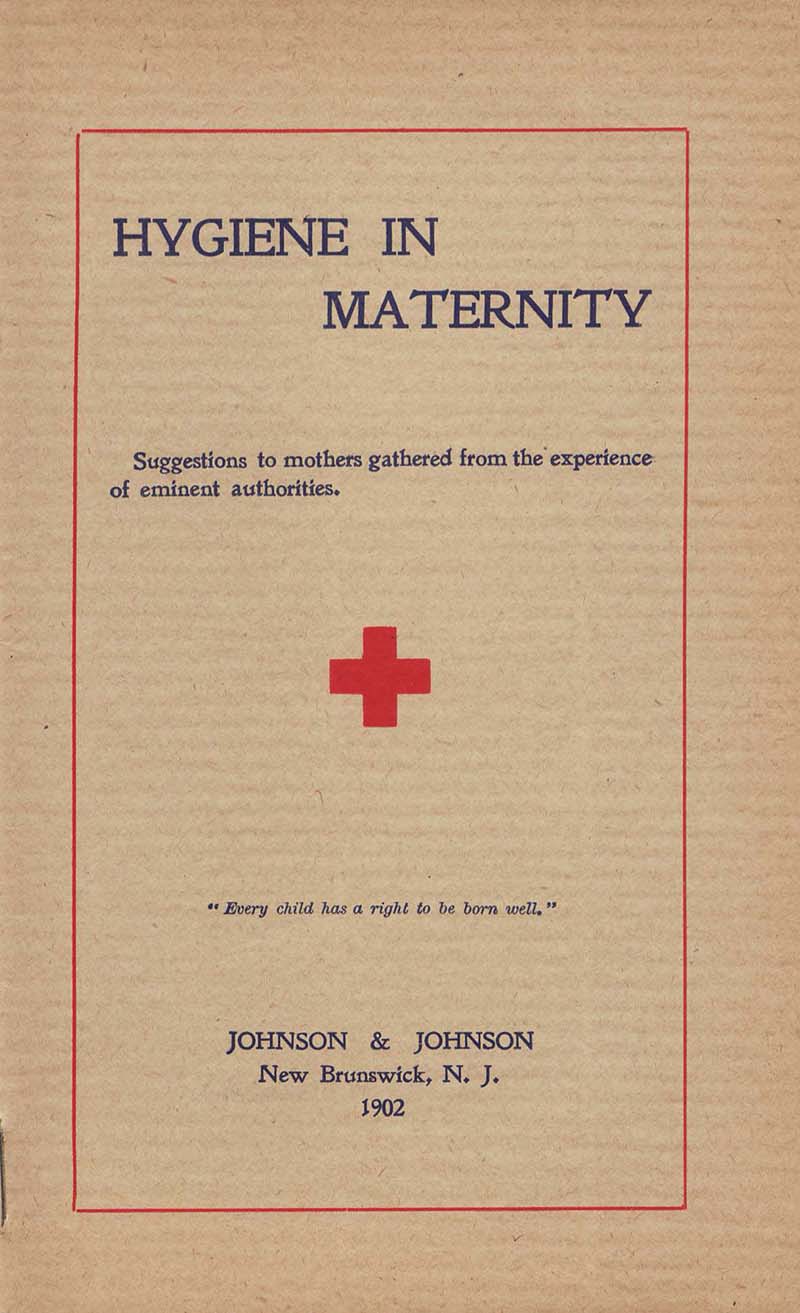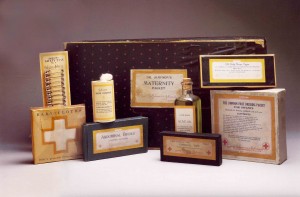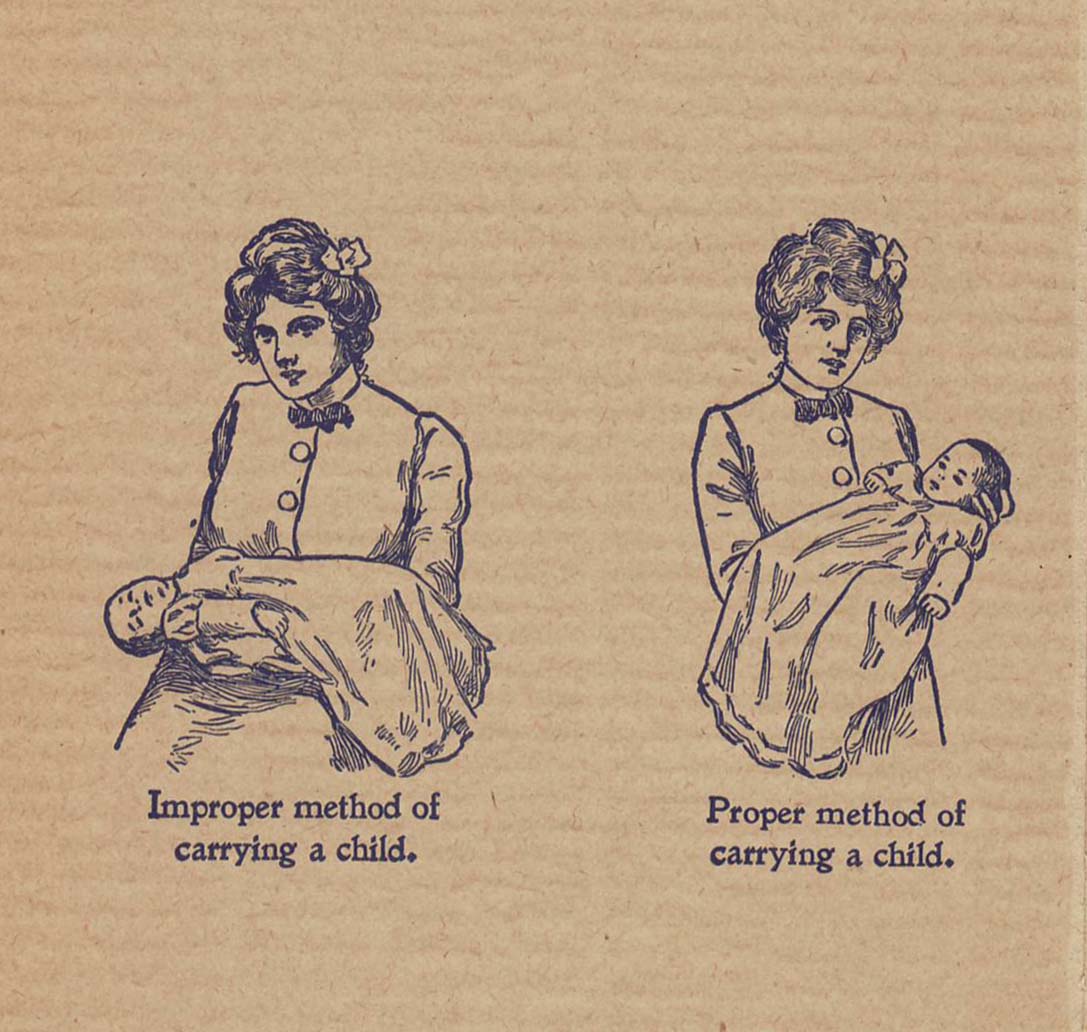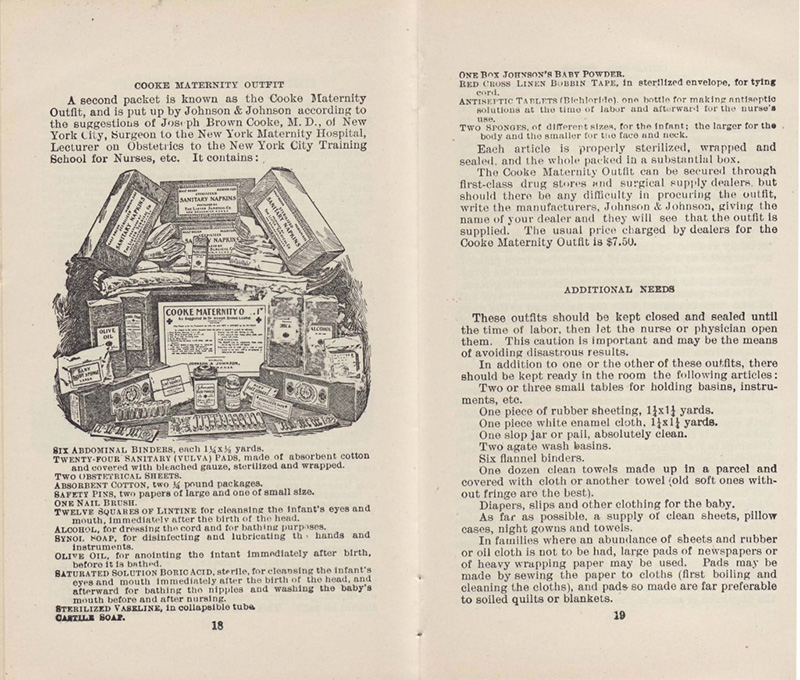Maternal and Child Health: From Booklets to text4baby
The White House just announced the launch of a new public health initiative, text4baby. My colleague Marc at the JNJBTW blog just did a post on it. It’s the U.S.’s first ever free mobile health service and it provides timely expert health information for pregnant women and new mothers through SMS text messages. Johnson & Johnson is one of the founding sponsors. In 2010, this health information is being provided in a portable, easily accessible manner through technology; 108 years ago, Johnson & Johnson provided health information to expectant and new mothers in the most easily portable technological method for 1902 – a small booklet.

The booklet was called Hygiene in Maternity, and it was only 4 x 6 ½ inches, designed to be small enough to fit into a pocket or a purse so that women could carry it with them. It was subtitled “Suggestions to mothers gathered from the experience of eminent authorities,” and lower down on the cover was the slogan for the Company’s maternal and child health campaign: “Every child has a right to be born well.”
The booklet opened with a chapter called “The First Things to Do.” Here’s the first sentence: “As soon as she is aware of her condition, or has a belief as to its probability, the mother should place herself under the care of a physician of experience and reputation…” [Hygiene in Maternity, Johnson & Johnson, 1902, p. 3] It then went on to list some of the signs of pregnancy, how to calculate a delivery date, and some of the basic milestones in the development of the baby during pregnancy. The booklet gave expectant mothers advice on keeping calm (women were advised not to read medical books – unless authorized by their doctors -- or scary stories). It also contained information on maintaining the mother’s general health during pregnancy, on clothing (telling women to abandon heavy, restrictive or tight-fitting clothing, such as corsets, during pregnancy), proper exercise during pregnancy, and proper rest and diet. Getting back to the clothing advice for a moment, the booklet also gave this very good piece of practical advice for pregnant women: “High-heeled shoes which impede locomotion and cause stumbling, are not to be worn.” [Hygiene in Maternity, Johnson & Johnson, 1902, p. 6]
The Hygiene in Maternity booklet was surprisingly modern about exercise during pregnancy. Here’s what it said:
“Even up to the very day of lying-in, a healthy pregnant women will find herself benefited by exercise. Extremely active exercise should be avoided, although such as is taken should be agreeable. Exercise should be in the open air if possible; nothing is better than walking.” [Hygiene in Maternity, Johnson & Johnson, 1902, p. 6]
Although the booklet advised women to exercise appropriately during pregnancy, it told them to avoid heavy or strenuous housework. In the era before modern appliances and conveniences, that advice that was no doubt received with great enthusiasm by the booklet’s readers. Hygiene in Maternity went on to advocate plenty of sleep and devoted a long chapter to diet, recommending nutritious and easy to digest foods during pregnancy.
In another startlingly modern section, the 1902 booklet devoted a section to care of the teeth, stating that because women were more prone to tooth decay while pregnant, extra care should be taken to brush teeth at least twice daily and rinse the mouth with an antiseptic mouthwash. Hygiene in Maternity quoted an old proverb current over 100 years ago, “for every child a tooth.” The proverb referred to the conventional wisdom over 100 years ago about pregnancy leading to the loss of teeth. The booklet explained that, using the latest medical knowledge, women could easily prevent that from happening. It also covered morning sickness and how to alleviate some of its effects, preparations for labor, and making sure women and their doctors had “the maternity outfit” ready.

One of the Company’s “maternity outfits” – Dr. Simpson’s Maternity Packet
In 1902, most babies were born at home rather than in hospitals. Starting in the late 1800s, Johnson & Johnson made maternal and child health kits, which contained everything the doctor would need to insure a safe and health delivery for mother and baby.
The Hygiene in Maternity booklet went on to cover what to expect during labor, what the doctor and obstetric nurse should do, and why the room in which the baby was born should be made as clean as a hospital operating room to avoid any chance of post-birth infection in the mother. (Called childbed fever throughout history, it was a major risk for women that the Company sought to eliminate through its maternal and child health kits and through education.)
There was a chapter containing suggestions for the nurse during labor. This chapter stressed putting the mother and baby first at all times, giving both medical and practical advice. Once the baby was born, the Hygiene in Maternity booklet gave instructions that included how to tie the umbilical cord, clean the baby, and care for the mother. It also included detailed instructions for care of the mother and baby in the days following delivery, advising the obstretric nurse on proper aseptic hygiene and listing the kinds of supplies and materials that would be used. There was a section on feeding the baby – how often and how much, and on diet for the mother. Even the back cover had important information: illustrations showing the new parents how to properly hold their baby.

Back cover of Hygiene in Maternity, 1902
The Hygiene in Maternity booklet must have been immensely reassuring to expectant mothers because of its volume of information and advice starting with the beginning of the pregnancy to feeding and caring for the baby. It was a portable, easy to follow handbook with advice from medical experts.

Illustration of Dr. Cooke's maternity kit from Hygiene in Maternity
The Hygiene in Maternity booklet and the “Every child has a right to be born well” education and information campaign grew out of the Company’s maternal and child health kits and its tradition of publishing educational materials to improve public health. The Johnson brothers, with their emphasis on promoting antiseptic surgery to improve surgical survival rates, and Fred Kilmer, with his lifelong dedication to improving public health, saw these kits as an important way to reduce the risks associated with childbirth over 100 years ago. Since publishing Modern Methods of Antiseptic Wound Treatment in 1888, Johnson & Johnson used education as a way to promote not only its products, but also the latest medical and health knowledge -- to improve surgical conditions, public health and the health of families. We still do that today, but now we’re using text messages to cell phones – so that women can carry the advice and information with them wherever they go, just like they did with our booklet over 100 years ago.

nice posting
there is really a big difference between Text4Baby and the booklets companies like Johnson & Johnson handed out to new moms over a century
This is indeed an informative post and shows why Johnson & Johnson is such a household name for most families today. Thanks for the information.
Children represent the future, and ensuring their healthy growth and development ought to be a prime concern of all societies. Newborns are particularly vulnerable and children are vulnerable to malnutrition and infectious diseases, many of which can be effectively prevented or treated. *-."
Please do stop by this useful blog site http://healthmedicine101.com